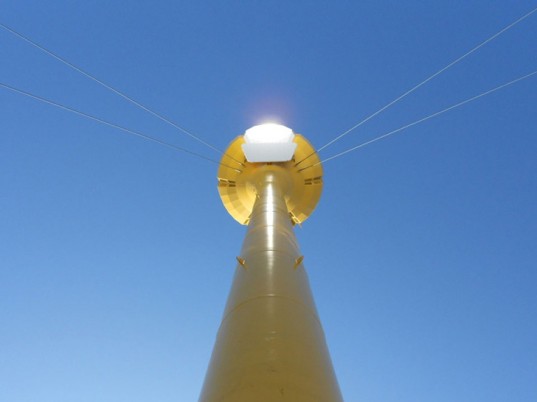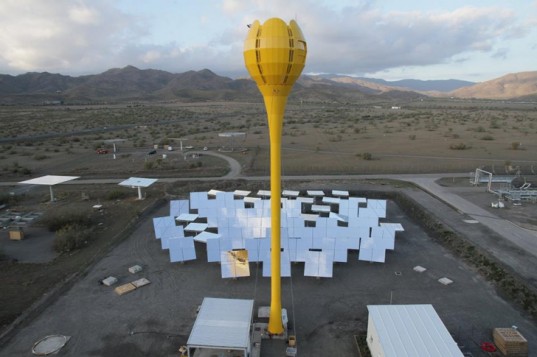
AROA’s Second Solar Tulip Power Plant Springs Up in Spain
Andrew Michler

 AROA‘s Solar Tulip is firstly a unique, if not elegant looking concentrated solar power tower which was very much designed to look less jarring in the landscape. The Israel-based company’s lead design architect Haim Dotan stated: “the Solar Tulip’s beauty doesn’t mean that it’s more expensive. It’s down to fun and hard work.” The relationship between aesthetics and industrial solar energy plants is a new frontier.
AROA‘s Solar Tulip is firstly a unique, if not elegant looking concentrated solar power tower which was very much designed to look less jarring in the landscape. The Israel-based company’s lead design architect Haim Dotan stated: “the Solar Tulip’s beauty doesn’t mean that it’s more expensive. It’s down to fun and hard work.” The relationship between aesthetics and industrial solar energy plants is a new frontier.
The system works in a unique fashion as well. Each installation can produce a peak output of 100 kWh, and individual plants are capable of being networked together. Thus creates scalable systems which grow over time and can be implemented quickly with simple financing. 50 mirrors track the sun and heat air inside the bulb to 1,000 degrees centigrade. As the air expands it is forced through a turbine to create electricity — rather than using conventional steam, which consumes 10 times the water for operations. Each plant will cost an estimated $550,000.
The plant can also use conventional or biomass fuel to act as a bridge when the sun goes behind clouds or sets, and it is capable of running 24/7 to produce a steady flow of electricity to the grid. Even the waste heat can be used for industrial and agricultural processes, giving the design a level of cross-industry integration and pointing the way towards clean energy on a massive scale. The Spanish plant’s waste heat will be used for the operation of a demonstration desalination system capable of delivering 3 cubic meters of fresh water per day.
